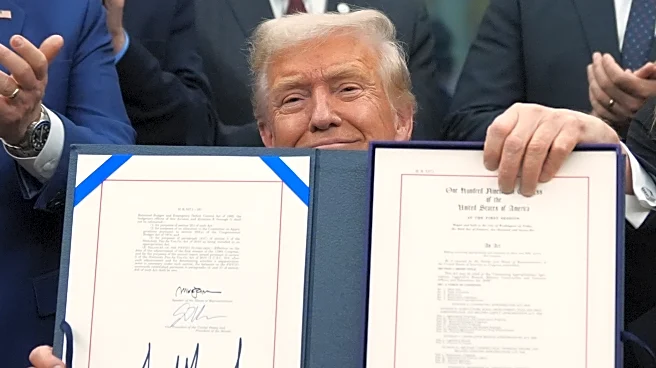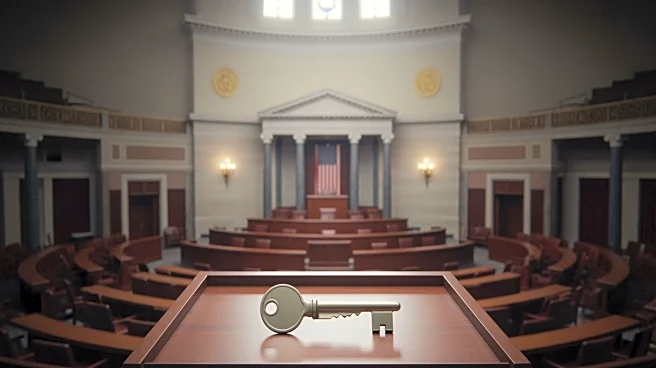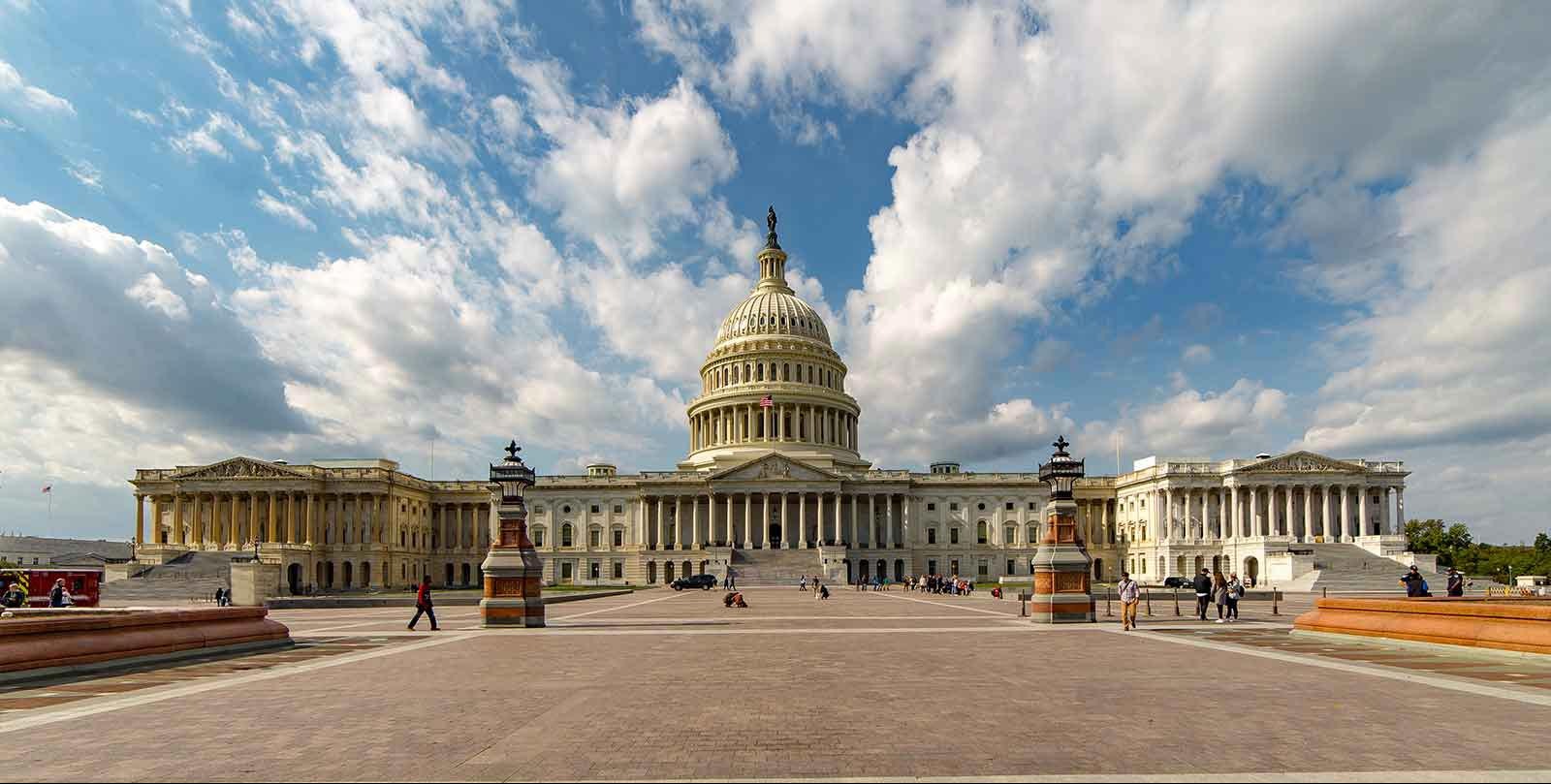What's Happening?
President Trump signed legislation to end the longest government shutdown in U.S. history, lasting 43 days. The bill restores funding for federal agencies and reinstates federal workers affected by the shutdown. The House voted 222-209 in favor of the measure,
with six Democrats joining Republicans. The bill includes appropriations through next September and maintains current funding levels until January 30. However, it does not extend enhanced subsidies under the Affordable Care Act, a point of contention among Democrats. The shutdown had significant economic impacts, particularly in Washington, D.C., where many federal employees reside.
Why It's Important?
The end of the shutdown is crucial for federal workers who faced financial uncertainty and delayed paychecks. The economic impact was substantial, costing $14 billion per week and affecting GDP. The resolution of the shutdown allows federal agencies to resume operations, but the lack of extended ACA subsidies may affect healthcare affordability for millions. The political dynamics during the shutdown highlighted partisan divides, with Democrats emphasizing their commitment to healthcare and affordability, which they believe contributed to recent electoral victories.
What's Next?
Federal employees are expected to receive paychecks by November 20, and delayed food stamp benefits should arrive by Monday. The shutdown's resolution may lead to further political maneuvering, particularly regarding healthcare subsidies. The House Minority Leader's attempt to extend ACA subsidies failed, indicating ongoing legislative challenges. The shutdown's impact on federal reports and operations may take time to fully resolve, with agencies working to restore normal functions.














